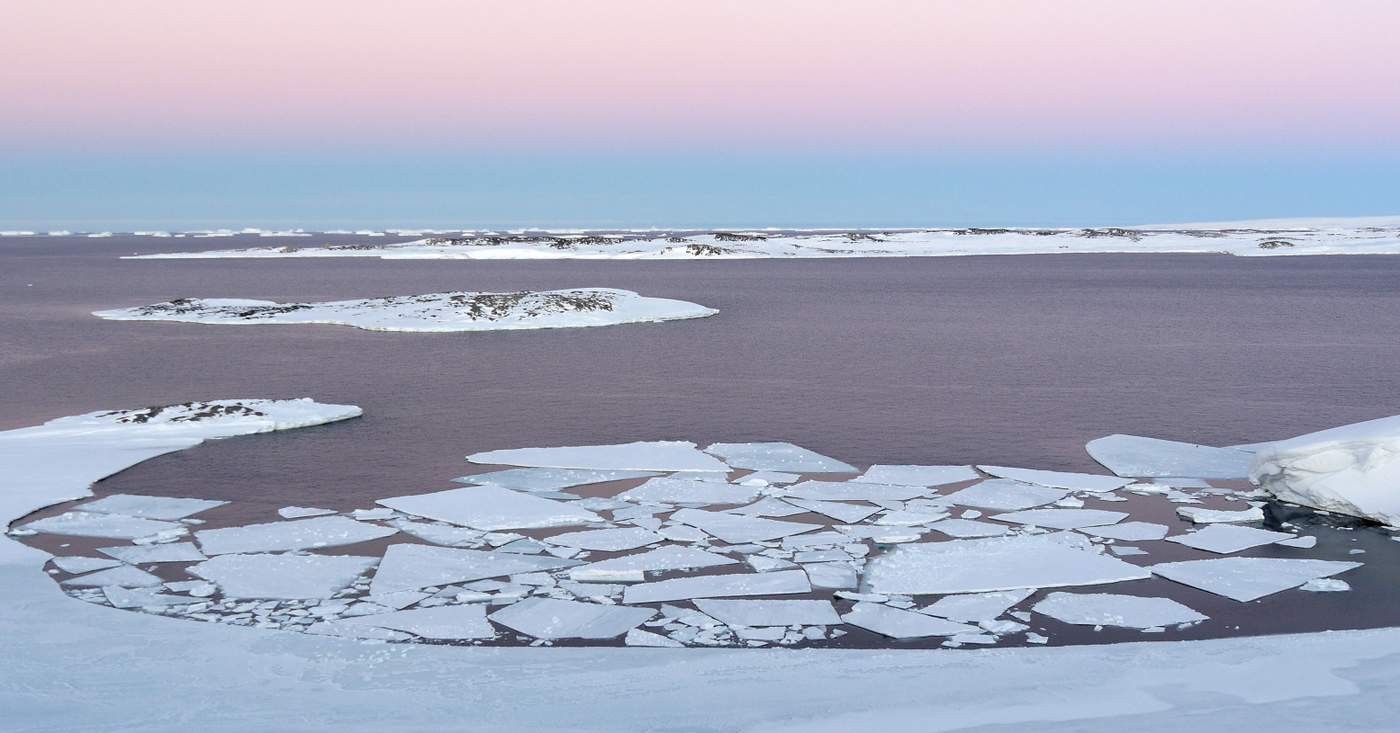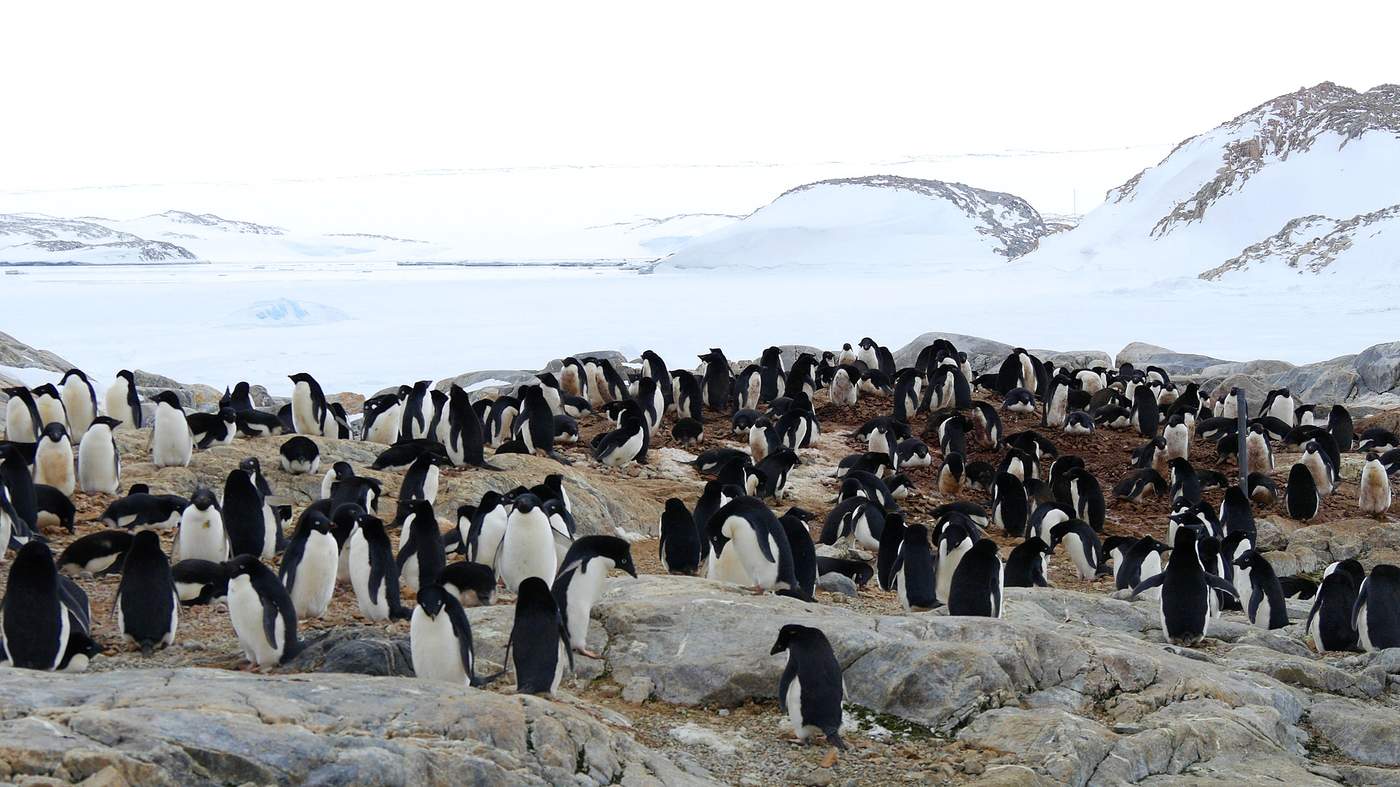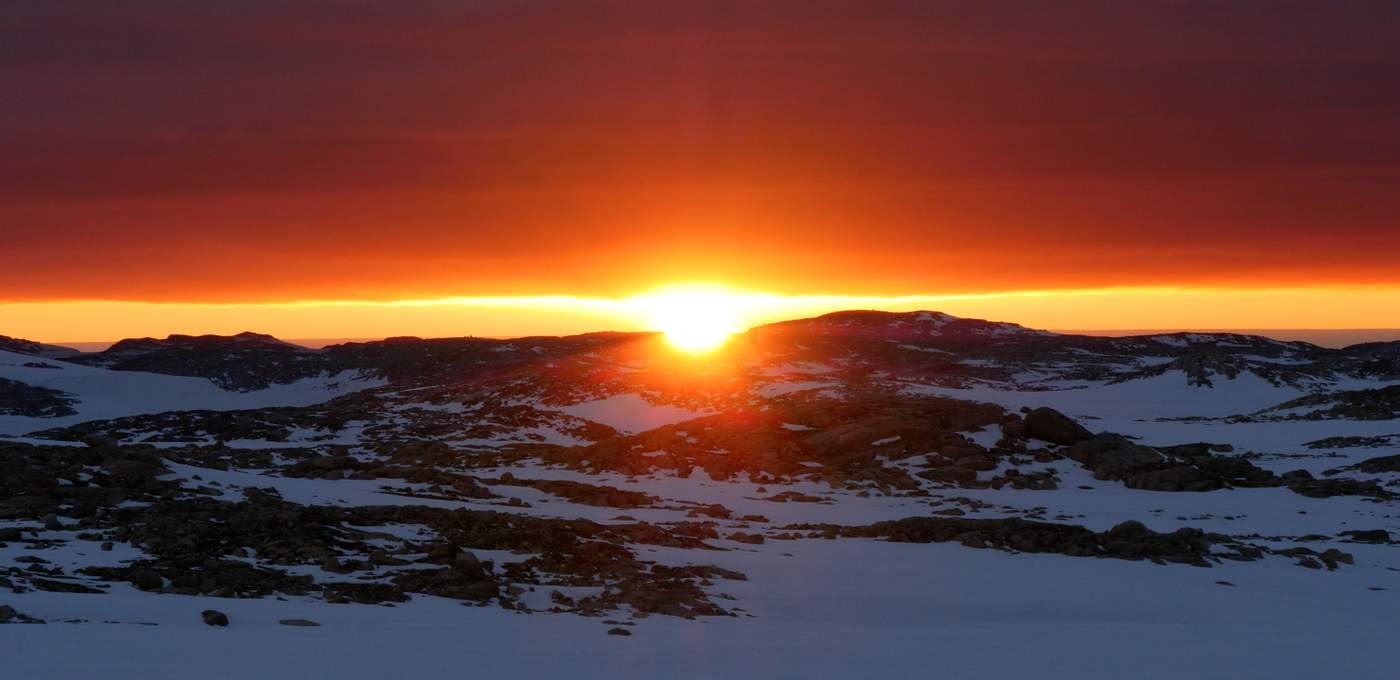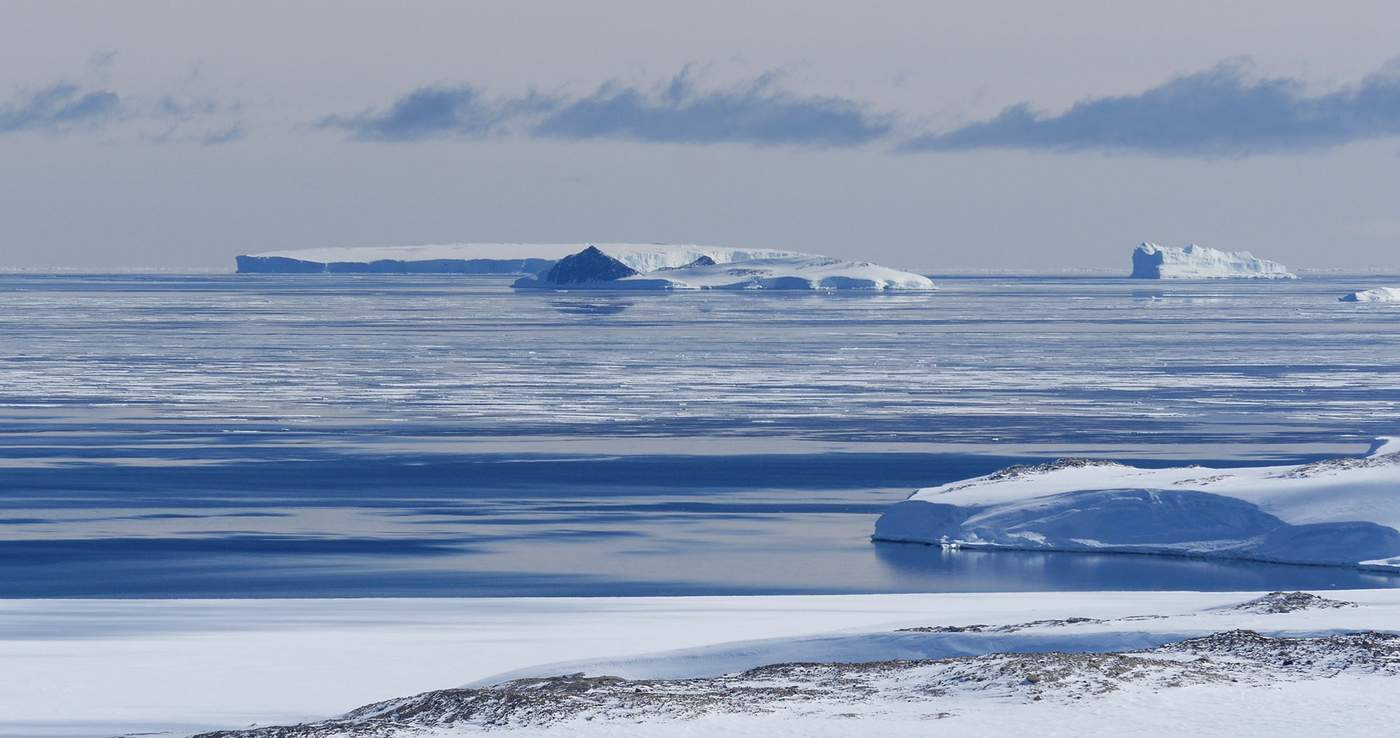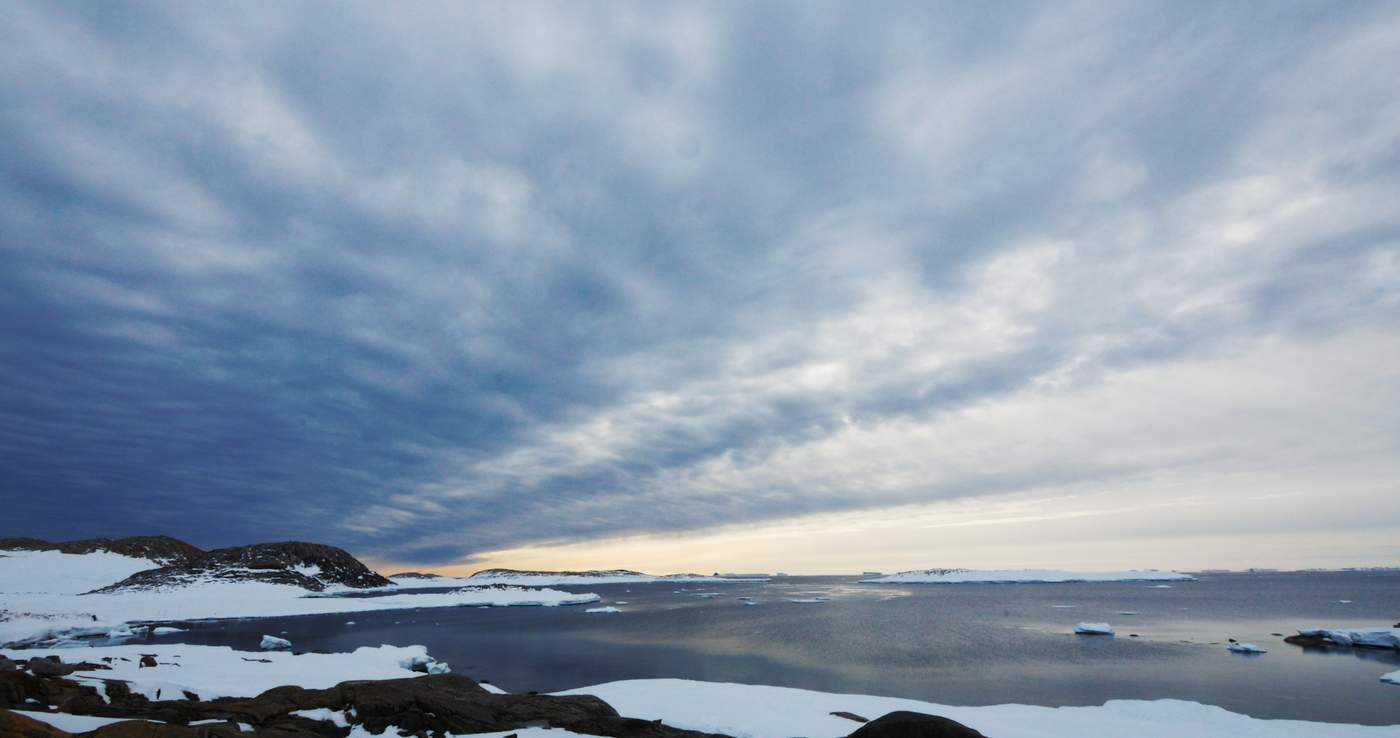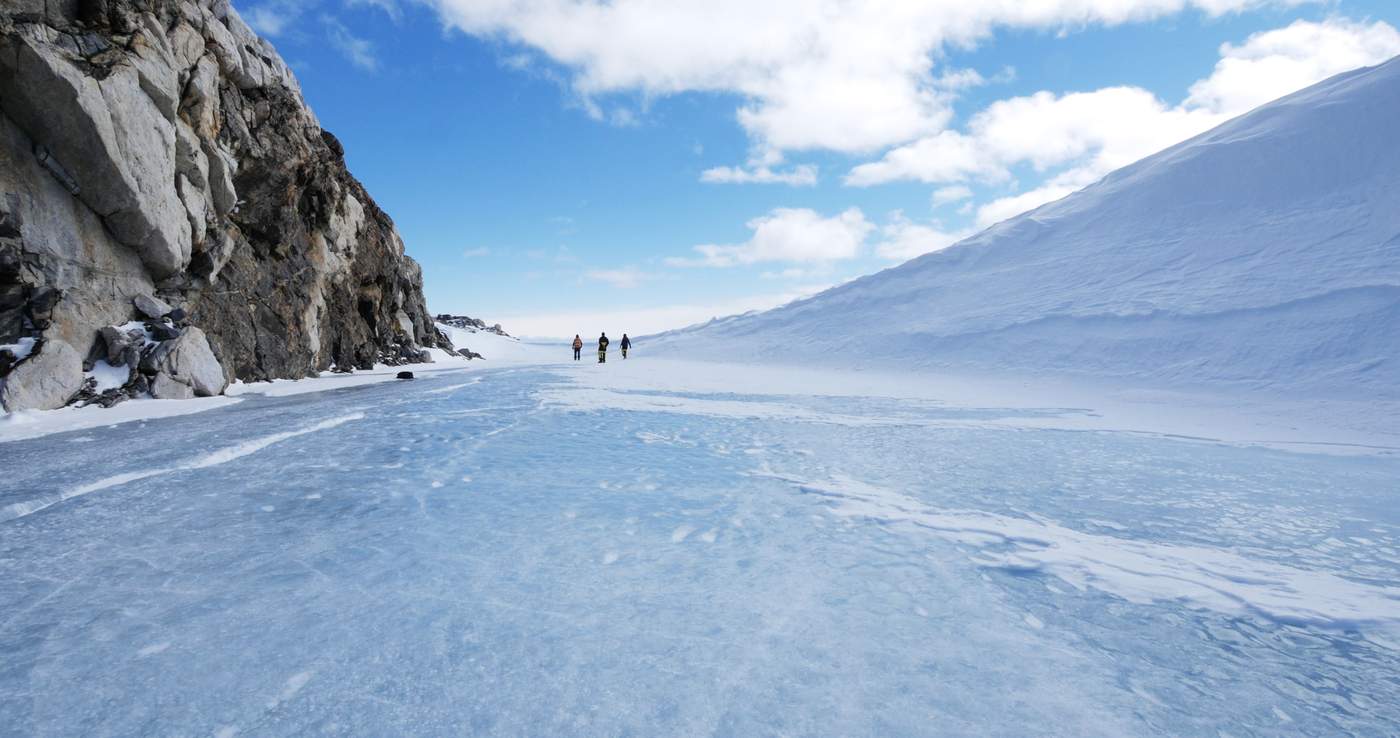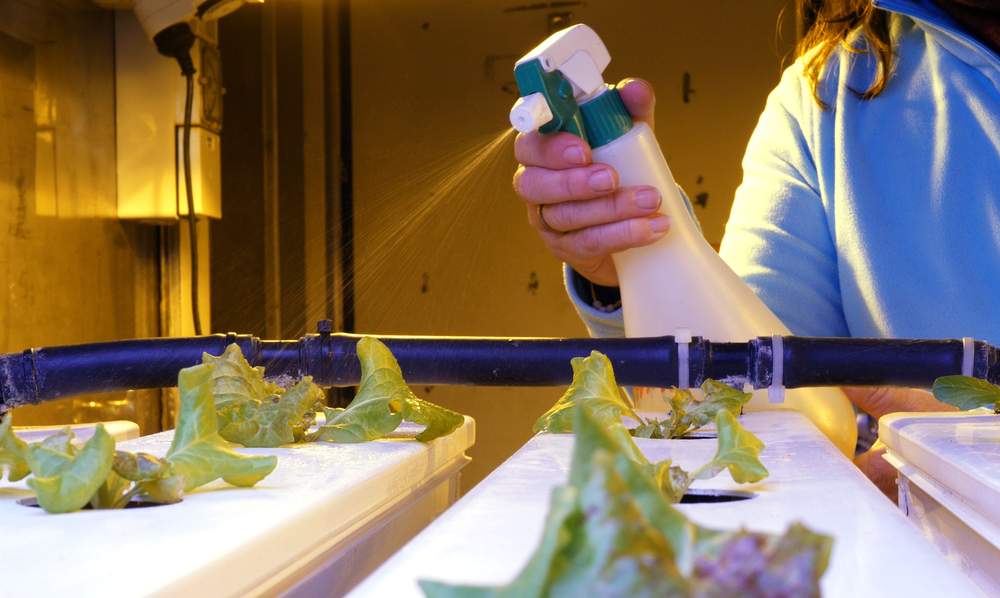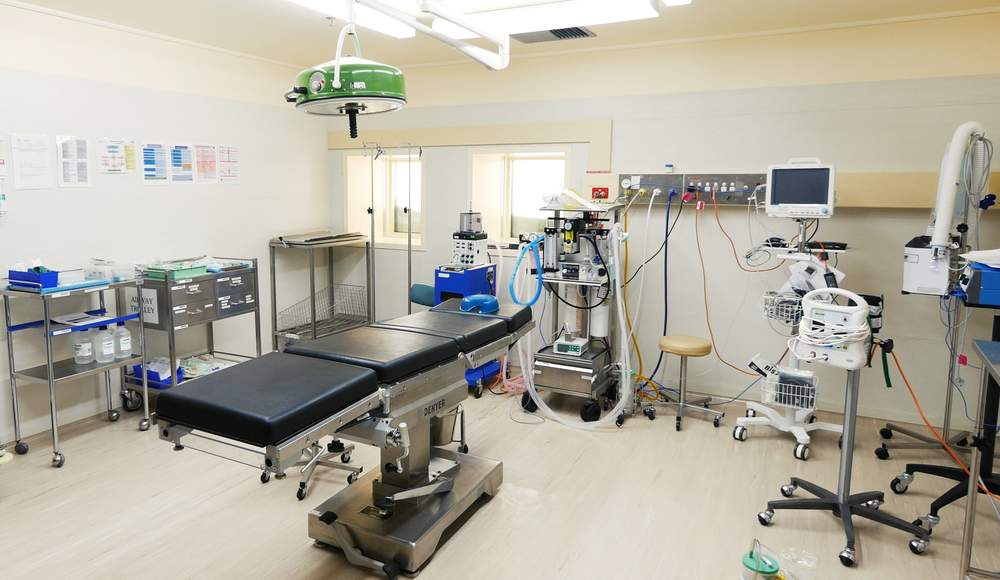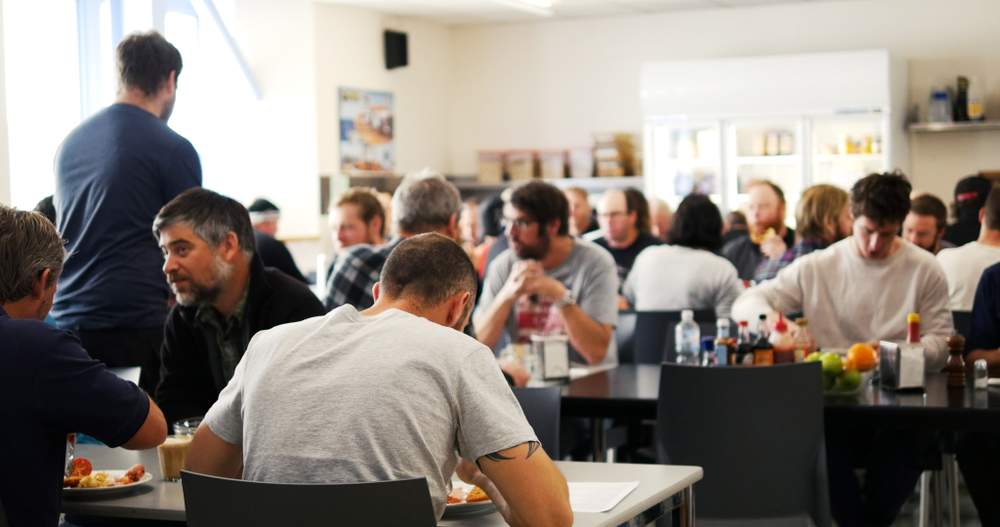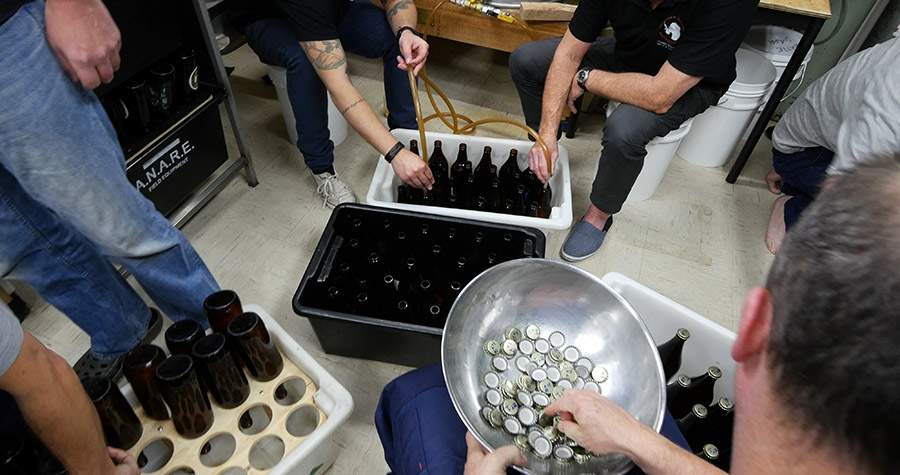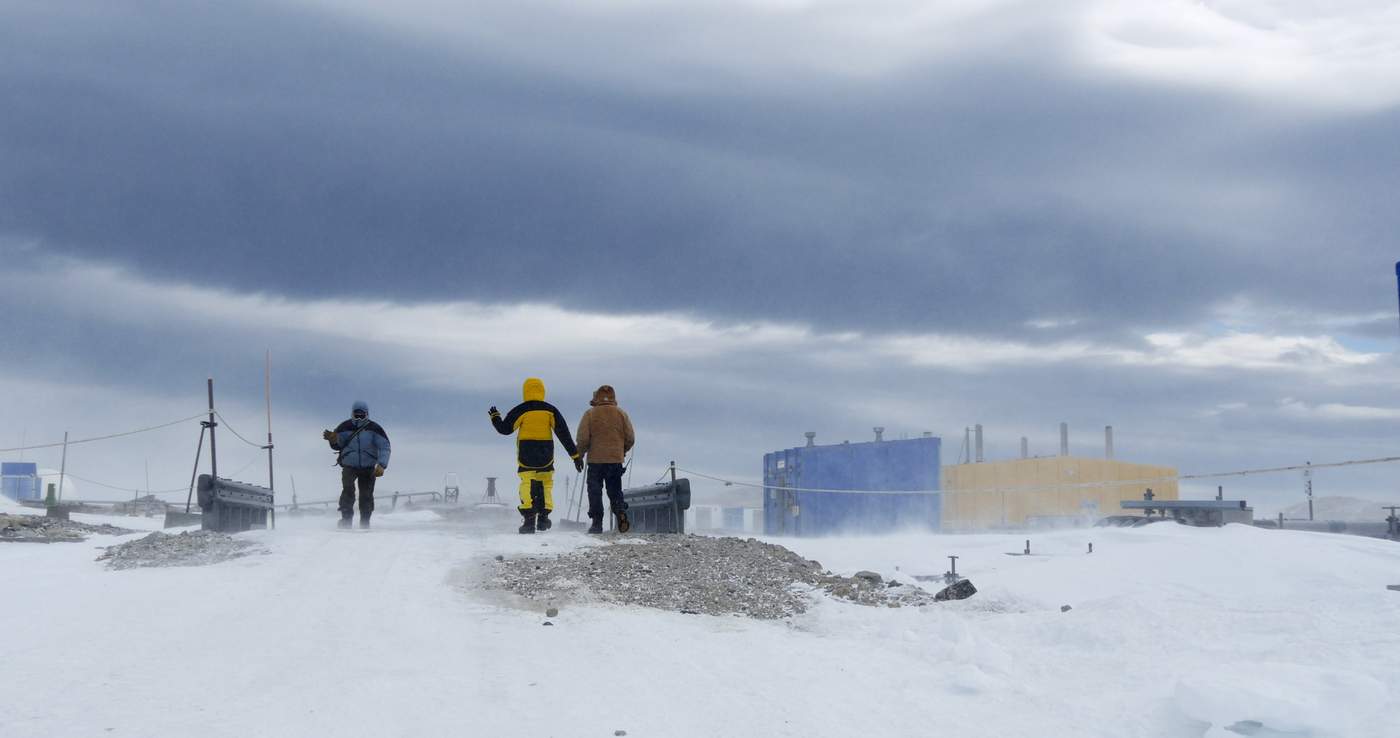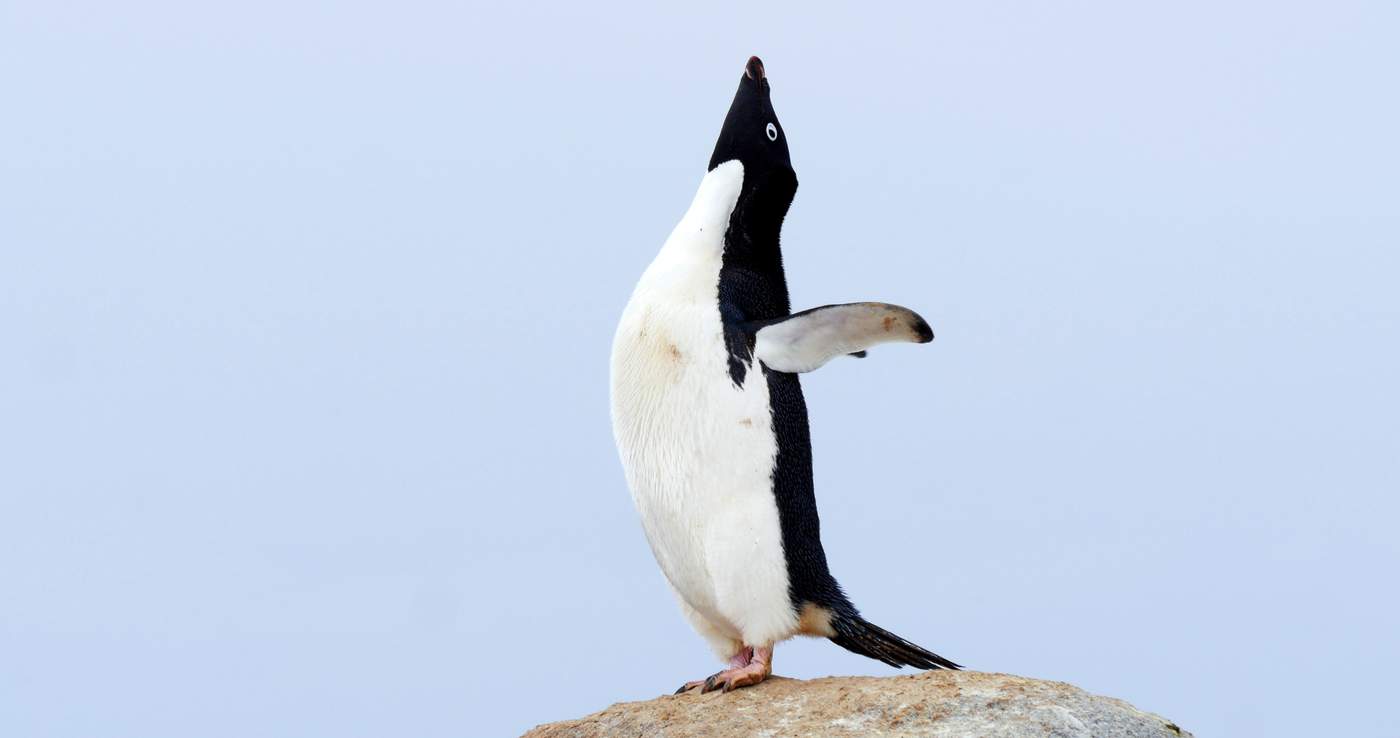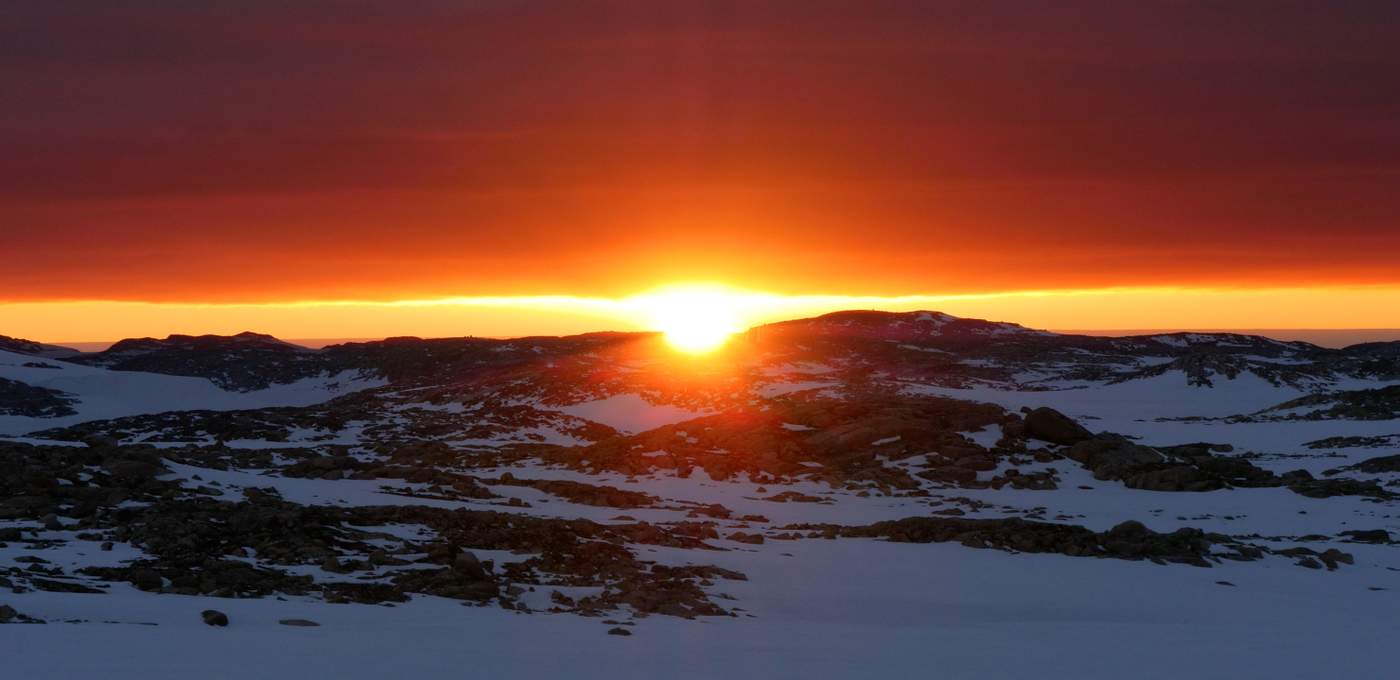There's a glacier in Antarctica so immense that, if it melted, would raise sea levels globally by 3.5 metres.
It's melting. Right now.
"The facts around climate change are undeniable. It's happening," Australian glaciologist Ben Galton-Fenzi told The Huffington Post Australia. "The research we do now isn't about trying to convince ourselves it's real, because it's irrefutable. What we're trying to do is understand what the response time of the system is going to be into the future, so we can adapt to it."
The Totten glacier is the biggest in east Antarctica. The glacier itself is around 120 kilometres long, 30 kilometres wide and drains some 538,000 square kilometres of the continent. That's an area bigger than California. The ice is kilometres thick, but it's melting at 70 metres a year in some spots. A study released in December reported warmer water was melting the Totten ice from below.
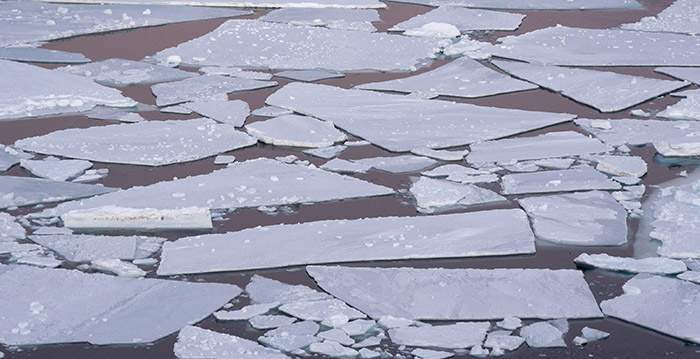
Galton-Fenzi and his small team will spend the next few months trying to work out exactly how fast the glacier is melting, gathering data to build better models to predict melt rates and how that will affect sea levels.
"The majority of the heat that has gone into the global climate system has gone into the ocean, about 90 percent over the last few decades of measurements," he said. "The hypothesis is ocean temperatures around Antarctica will keep warming and drive the melting of the glaciers. If the glaciers flow faster, sea levels will rise, and that has profound implications for global civilisation."
The glaciologist is tall and broad, good-natured and warm with a cheeky grin. But when we return to the portent of climate change, the principal research topic being undertaken at Casey station, the largest of Australia's Antarctic installations, his joviality melts away.
"I have two children, I worry about their future. What sort of world are they going to have to inherit?" he says, fiddling with a piece of research equipment, one of many complicated gizmos he shows us inside one of Casey's massive storage sheds. "I see my job here as trying to do a better job of that, especially when they get old enough to have kids and I have grandchildren. The world we work on today is the world they inherit tomorrow."
Around 4000 kilometres due south of Perth, on the Bailey peninsula of the frozen continent, Casey is essentially a small town of around 100 hardy expeditioners during the summer months.
There are carpenters and plumbers, mechanics and cooks, doctors and electricians and more to keep the station running and operational.
But Casey is a research station. It's all about the science, and especially climate science.
"Climate change is a reality. There's the whole debate around how we deal with it, and the work we do in Antarctica is influencing our ability to look forward and genuinely understand how much things are going to change," Australian Antarctic Division director, Dr Nick Gales told HuffPost Australia from Hobart, the base of operations for the AAD.
"It is alarming. There is huge change going on there. The more we learn, the more we see change happening at rates faster than we predicted. It's fundamentally important to support the science, communicate the science really well, and make sure the policy makers are aware of the science so they can take account of that in forming mitigation and adaptation strategies around the world."
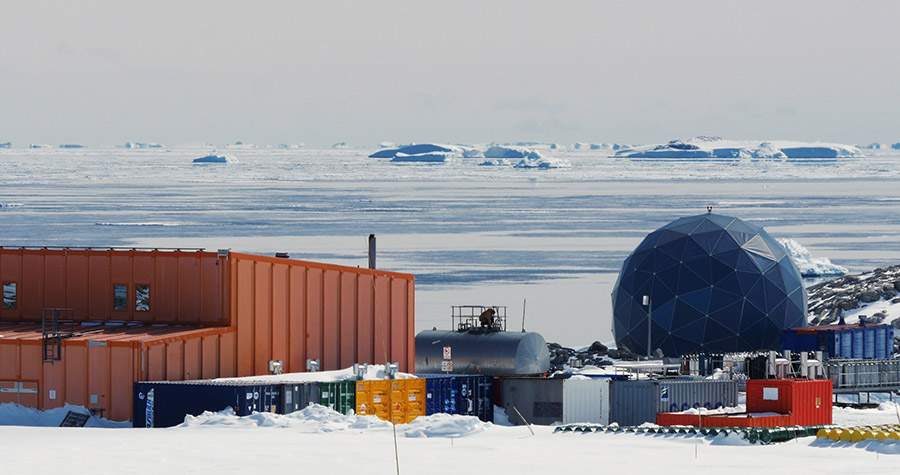
The AAD is the government body that administers Australian operations in Antarctica, from delivering workers and equipment to the continent, to selecting the research applications to be undertaken each season, to making sure the kitchen at Casey is well stocked with chocolate.
"When we started doing science in Antarctica, it was important and interesting because we were learning about things we simply didn't know about."
"Nowadays, the science is really critically important to what we do in the future."
It's critical to our wellbeing and our ability to understand what's coming, and adapt and mitigate the effects. What about the droughts? Are they going to become more regular? What will happen to our low-lying areas and Pacific islands in relation to sea level rise? The science we do is critical for informing that."
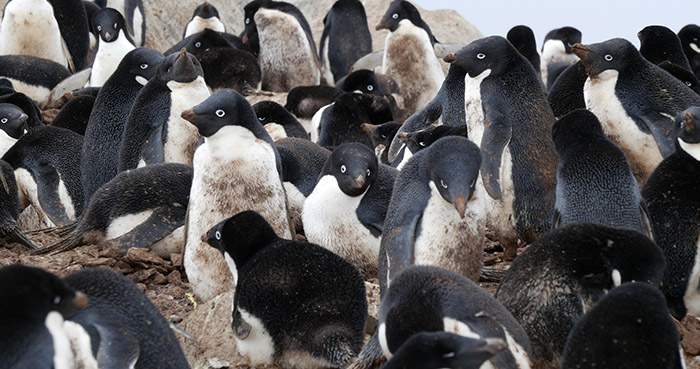
This season, the AAD will support almost 100 projects in Antarctica and the Southern Ocean. More than 500 expeditioners will make their way down each year for major "season-defining" projects such as Galton-Fenzi's Totten glacier work, and smaller-scale operations. Gales said around two-thirds of the Australian-led research in Antarctica is related to climate science.
It is a continent almost entirely covered by ice, the largest ice sheet in the world and the planet's largest single reserve of fresh water. It's almost entirely untouched by humans, uninhabited but for the research teams (and a whole lot of amazing animal life, as we soon discovered); a continent literally devoted to science.
The 1959 Antarctic treaty, signed by the 12 countries which had been active in Antarctica -- Argentina, Australia, Belgium, Chile, France, Japan, New Zealand, Norway, Russia, South Africa, the United Kingdom and United States -- agreed to set aside territorial claims and enshrine the continent as a place for peace, science and international collaboration. Scientists work together, sharing resources, manpower and findings, for the good of humanity under this treaty, which states:
- Antarctica shall be used for peaceful purposes only (Art. I)
- Freedom of scientific investigation in Antarctica and cooperation toward that end … shall continue (Art. II).
- Scientific observations and results from Antarctica shall be exchanged and made freely available (Art. III).
"It's unique. It's extraordinary that, in a place like that, the world can agree to set aside differences and focus on those really important issues," Gales said.
Johnstone and Black are cutting through the frozen sea ice for experiments on ocean acidification. As the Earth continues to emit carbon dioxide, the oceans soak up a large percentage of that extra CO2; around 30 percent, Black said.
Rob King, an AAD biologist based in Hobart, said around eight billion tonnes of CO2 is going into oceans each year.
"It increases the acidity of the ocean and lowers the pH. The global ocean average is about 8.2pH, and we're expecting by the year 2100 with the current emissions scenarios we have, the pH will drop to 7.8," Black said.
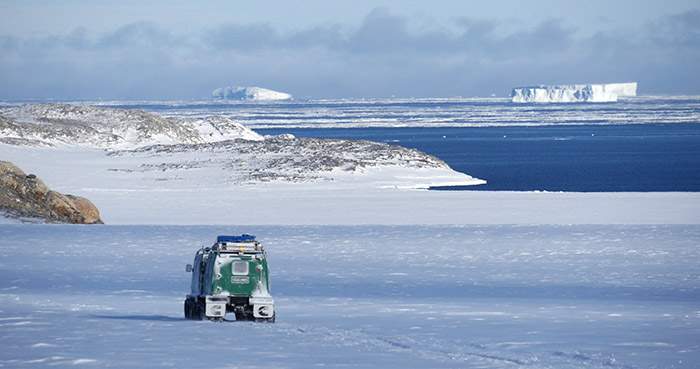
That's a massive change for the ocean, with the water becoming far more acidic. That's bad news for many tiny organisms and plankton that make up the bottom of the oceanic food chain, upon which larger creatures like penguins, fish, dolphins, seals, sharks and whales depend. Black and Johnstone have planted tiny chambers on the ocean floor to simulate how the water and the organisms will react to more acidic waters. They will also collect water and loads of these tiny organisms for experiments in the lab.
"As we acidify the water, anything with a calcium carbonate structure in its shell, like shellfish, pteropods and other organisms, will actually have trouble forming that shell and maintaining it," Black said.
"When we look at the relative biomass of different organisms, we get about 600 million tonnes of phytoplankton down here. That's the most biomass of any organism in the Southern Ocean. While they seem small and insignificant, they are the most important part of the ecosystem. Any change in that under climate change conditions will have flow on effects up the food chain."
Black and Johnstone cut several large, round holes, bigger than manhole covers, into the sea ice to snake down hoses to suck up water and micro-organisms from near the sea floor. They also drop down a yellow remote-operated vehicle (ROV), like a tiny submarine, to capture footage and check out the dark depths. It's much easier and safer than having to suit up in scuba dive gear and swim down themselves. It also means they often find unexpected visitors near their work sites.
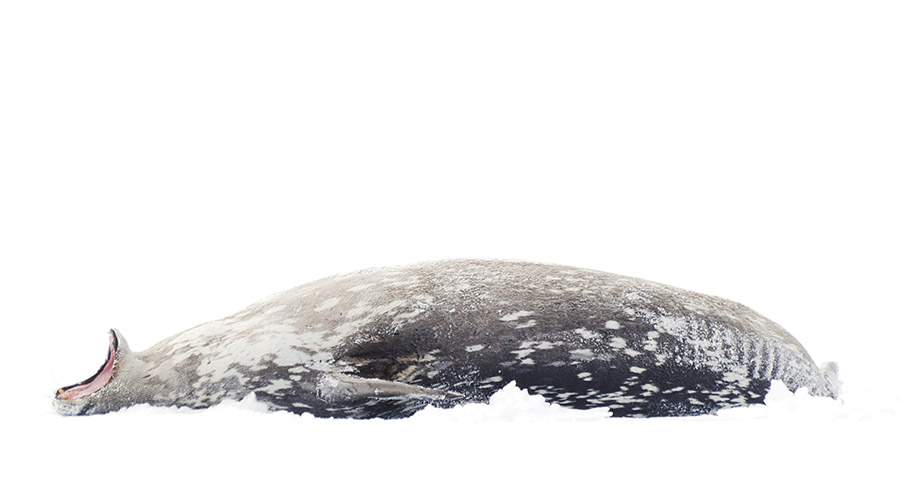
"It's quite common that seals will come up. It's a ready-made exit hole for them. We'll come up in the morning, there will be two or three seals lying around the hole," Johnstone laughed.
While the wide open, flat, dry, harsh and frozen surface of Antarctica is home to little bar the hardy penguins and seals, below the ice is a teeming wonderland of sea life; fish, urchins, sea cucumbers, worms and stunningly colourful forests of anemones, sponges and vegetation that makes the floor look more like a tropical coral reef than a frozen bay at the bottom of the world. Despite what's happening on the surface --blizzards, gale-force winds, snowstorms -- down below it's actually not a bad place to live.
"The Antarctic environment is very harsh but under the sea ice you've got a really stable environment. It's always the same temperature, even though it's a really harsh temperature of minus 1.85C all year, but it doesn't vary much so they only have to adapt to one temperature," Johnstone said.
"There's very little current under here, because for 10 months of the year, there's a covering of sea ice. They don't have to deal with big tidal currents or waves or storms or wind action, or temperature changes. The conditions are relatively stable through the year."
Back in Hobart, biologist Rob King is working on a similar project, but with a different organism in mind: krill. They're tiny prawn-like animals that swarm in massive bunches before being scooped up by whales, seals, penguins and more Antarctic favourites. In what he says is the world's only krill research lab, he's also studying how more acidic oceans will impact marine life. His news isn't good.
"If we expose krill eggs to the carbon dioxide expected in oceans by 2100, only half the eggs will hatch in the Southern Ocean," he said. "Those krill are driving the Antarctic ecosystem. That will drive changes because these animals, whales and seals and more, are specifically adapted to krill. We're looking at a big ecosystem change as the ocean acidifies and warms."
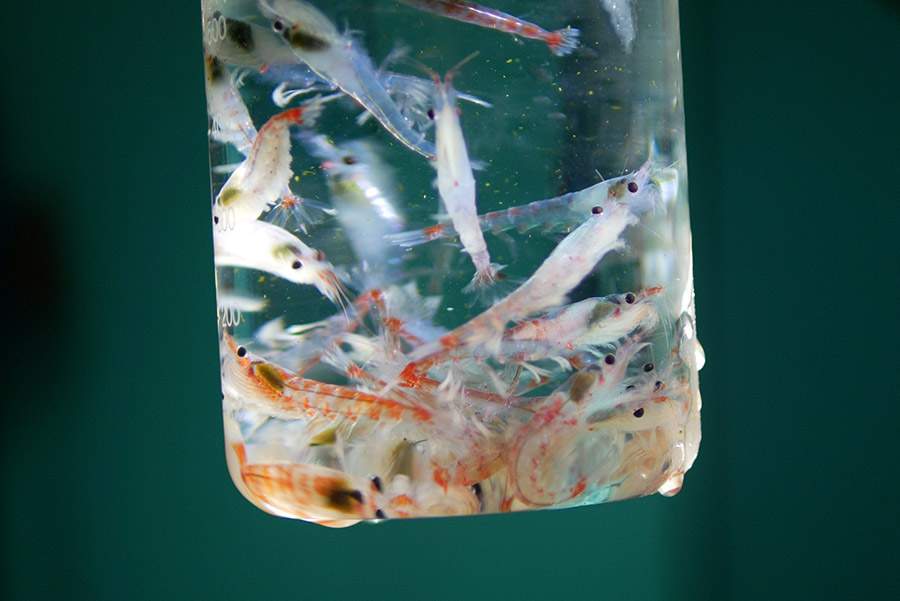
King says there is up to 500 million tonnes of krill in the Southern Ocean. If the population is halved because of ocean conditions, that will have enormous flow-on effects up the foodchain to the animals that rely on the krill.
The scientists are a united front on climate change -- it's happening, now, and we need to take urgent steps to mitigate the onward march and begin urgent work to prepare for the coming effects. But they're also working in opposition of the climate sceptic movement, the proponents of which have made their way into parliaments worldwide.
Here in Australia, the likes of George Christensen, Tony Abbott and many in the Liberal National Party are at least hesitant to blame man for climate change. One Nation senator Malcolm Roberts is a noted climate change denier. The opposition to action on climate change is so vicious and raw that environment minister Josh Frydenberg was recently howled down by his own teammates for even saying the words "emissions intensity scheme". In America, noted climate sceptic Donald Trump has just taken the presidency.
"We have a very straightforward role -- deliver the science, make sure policy makers understand it. We have no role beyond that, everyone will have their views. But our role in delivering the science is clear," Gales said.
"If you don't want to listen to the science, you basically have to say 'we won't use all the evidence'. People are entitled to that, but our role is to do the science, make sure it's right, and deliver that into the decision forums. Australia has been entirely open to that and remains entirely open to that. Our mandate to deliver that science without any pressure to have it pushed one way or the other remains so now, and that is really important."
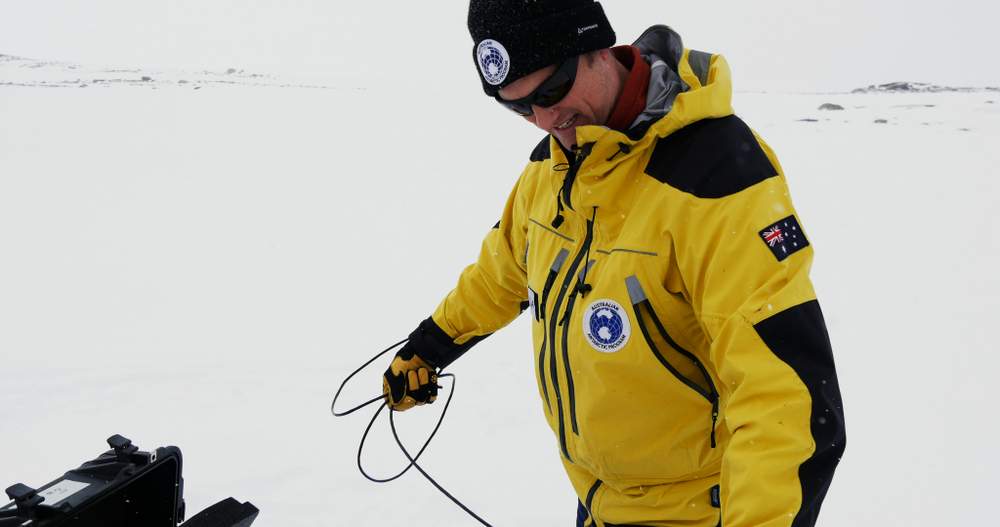
At Casey, Galton-Fenzi is checking his equipment. As part of his Totten glacier research, two pieces of gear are essential; a radar unit to measure the thickness of the ice, and a high-frequency GPS unit to measure how the glacier is flowing and moving. Once the conditions are good enough to fly, the team will erect six towers along two different flow lines of the glacier, with Autonomous phase-sensitive Radio Echo Sounding (ApRES) units to measure to millimetre precision how thick the ice is, and therefore how fast is melting.
The instruments are so unbelievably precise that the team can detect changes in the ice within 12 minutes. The data will feed into a collaborative international project called NECKLACE, which will install devices on every major Antarctic ice shelf to measure melt rates.
"Our experiments tell us the back of the Totten, the very deep part of the ice, is melting at about 70 metres per year, which is a huge amount," he said.
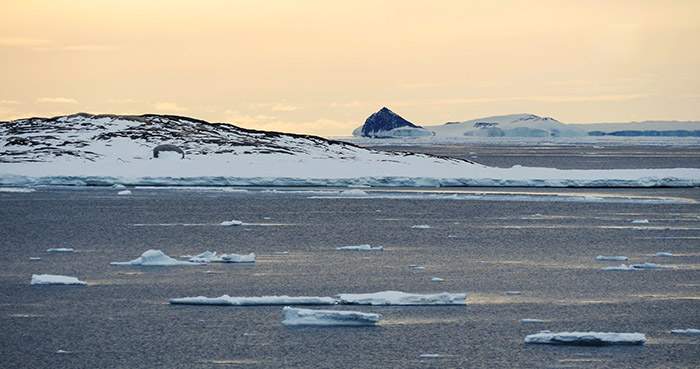
"We're hoping to understand how the ice sheet responds to change, so we can predict what the future contribution to global sea levels will be over coming centuries. We need to know that so we, as a society, can adapt in time.
"After a frustrating wait, the skies clear and conditions become right for the helicopters to make the long trip out to the Totten, carrying Galton-Fenzi, his team and his gear. He leaves us with some final thoughts before finally making it out to the glacier he has been studying from afar, the gigantic ice sheet he fears is the canary in the coalmine.
"I'm a very passionate believer that, for us to adapt to climate change as a society, we need to understand the response of the Antarctic to climate change," Galton-Fenzi said. "I think society has a need for the type of knowledge we're trying to deliver."
To understand how I came to be four feet under, catching snowflakes on my tongue, we need to rewind about 40 hours, when a military plane carrying the Governor-General landed on a runway carved out of ice.
The massive C17 military aircraft, also known as the Stallion, lands far more softly than it has any right to, taxiing into Wilkins 'airport' after a four-hour flight from Hobart. We're 4000 kilometres south of Perth, and we've landed on a sheer stretch of manicured ice several kilometres long, on the Bailey Peninsula of the frozen continent. We're ushered into the 'airport lounge', a few plastic seats and trays of chocolate biscuits in the front of a large container that serves as the airport headquarters.
It's not your regular commuter experience.
Around us, in all directions, is nothingness; a frozen white plain. Take away the aircraft, the shipping container of an airport and the various machinery and vehicles milling around, the landscape is more flat and featureless than you can imagine.
Not a tree, nor rock, nor mountain nor hill pocks the pancake-flat vista. It is the world's largest desert, the coldest and driest and windiest continent on Earth, and its very geography seems to play tricks on your mind.
The horizon seems far more distant than usual, like the very curvature of the Earth itself had been smoothed out somehow. Every colour bursts like neon against the blank snow and ice.
"I've been to places that are open and vast in parts of Australia, but I've never seen anything like this. The horizon seems further away than I've ever seen it before," Paul Ross, leader of the Australian research facility Casey Station told The Huffington Post Australia.
"It was the space and the colours that got me. The light pastel colours and the way the landscape looks stark but actually changes when you look at it for a while. It's the openness, the space, the emptiness."
It is the least populated and least visited area on Earth, so the men who mapped it are legends down here. Their photos line the walls of the stations, their stories fill the libraries. Indeed, the names of the stations themselves pay homage to great adventurers of the continent. Australian stations bear names like Davis and Mawson, who helped chart the way to the South Pole, losing men in a heroic and horrific quest that saw him miss his boat home by mere hours and have to wait another year for the ship to return. For his trouble, he got his face on some Australian banknotes and a whole lot of frostbite and Vitamin A poisoning from having to eat his dogs.
The United States bases of Amundsen–Scott and McMurdo, and the French facility Dumont d'Urville, are also named for great Antarctic adventurers. Their exploits are mythic. Tales of limbs and fingers and feet blackened by frostbite; sleds and dogs and men disappearing into great yawning crevasses, never to be seen again; stories of pure, raw survival and endurance, of simply refusing to die, of inching their way through blizzards and storms and endless miles of nothingness, pushed along by the simple unvarnished ideals of exploration and pioneering for its own sake.
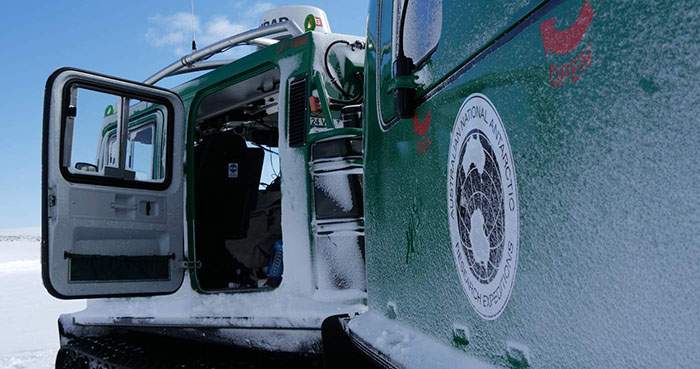
With Antarctica's human history built off the back of death, injury and sickness, it's little wonder they take safety so seriously. You're kitted out with bags and bags of safety equipment -- boots, jackets, at least six types of gloves, unbelievably long and thick socks, thermal underwear, goggles. Everybody takes it seriously, layering and layering and layering. It's not uncommon, however, to spot a expeditioner getting around outside in just a t-shirt, shorts and the standard issue black moon boots when the weather warms up (which is to say, when it gets somewhere near zero degrees C).
The standard uniform is affectionately named the 'banana suit', a big yellow safety suit of bright overalls and a parka about two inches thick. The station's doctor tells us that an injury like a broken leg, or worse, is rare -- about a twice-a-year occurrence. Of more danger is exposure. You would go 'snow blind' from the glare of the perfect whiteness in 15 minutes without goggles or sunglasses. Frostbite can get you even more quickly. In Antarctica, the equipment saves your life. It's the key focus of the mandatory survival training course that every expeditioner must complete before they're even allowed to walk outside the station limits.
For several hours we're taken through survival basics -- how to navigate back to station if we get lost, the safest way to walk across frozen sea ice, how to read the GPS units and use the radios we need to take on a long trek, how to work the ice axe and bivouac sack and all the rest of the gear in the massive survival backpack. We're also taught how to "relieve" ourselves when out on a long walk with a pee bottle and a field toilet, basically a glorified bucket; no pissing on trees or digging a pit out here (and a free tip, try not to leave your bottle out in the snow to get frozen solid into a pee slushie).
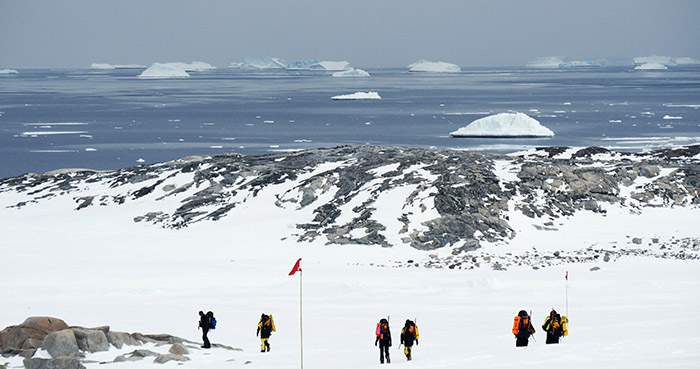
After the long process of suiting up -- long thermal underwear, thick knee-high socks, polar fleece pants and jacket, overalls, puffer jacket, beanie, gloves, snow goggles -- we're ready. We begin the trek out to Shirley Island, a little speck just offshore. The sea ice is thick enough to form a bridge for us to walk out from the ice shelf and across onto the rock island. We're told there's a penguin colony on the island, but much like at the zoo, didn't expect to see much besides a few stragglers milling about while the others slept. We round a hill, march over the crest and I spot a penguin or two on the ice in the distance near the water. I'm happy and point it out to a fellow survival trainee. She gives me a funny look and points about 60 metres to my left.
What I thought was an outcrop of rocks or moss is a massive squad of penguins, waddling about, squawking, sliding around on their bellies, trying to claim the best position on the rock and dirt. There's another bunch about 100 metres to the side, then another, then another. Laid out in front of us, lazing around nearly in the shadow of icebergs in the bay, sit thousands upon thousands of fat Adelie penguins, cheerfully chirping and chattering away; Johnstone says there's around 10,000 on the Shirley colony. A lone fat seal is splayed out on the ice not far away. We sit on a rocky outcrop for lunch, drinking in the best view in the world.
Before long, nightfall sets in and we set about digging those icy graves -- our beds for the night. We sleep out in the snow, mimicking a situation where we might be stranded outside the station overnight with no way back. We melt snow on little camp stoves to make boiling water for our dehydrated meals.
You can actually 'burn' snow, we find out, if you melt it too fast on too high a temperature. The beef stroganoff, formerly a rock-hard dehydrated lump in a paper bag, becomes quite tasty once warmed up. Our instructor teaches us how to dig snow 'coffins', deep trenches in the ground to lay our sleeping bag and bivvy bag to get out of the wind. Three-feet deep, it's cold down here surrounded by snow and ice, but it's still.
The penguins become a beloved feature of our time here, as they do for most expeditioners. "I think everyone remembers the first penguin they saw," laughs PhD student James Black, who is studying ocean acidification. Adelie penguins waddle up close enough to touch; brave and bold. There's no natural predators for them once they're out of the water. Seals are too slow to get them on land, so the penguins march right up to us, crane their necks up to check us out, stretch their little wings back and puff out their chests. Once assured we pose no threat, they waddle off again. It's mating season and the males are engaging in a unique ritual -- searching for the perfect rock to present to a potential mate. It's a penguin version of an engagement ring.
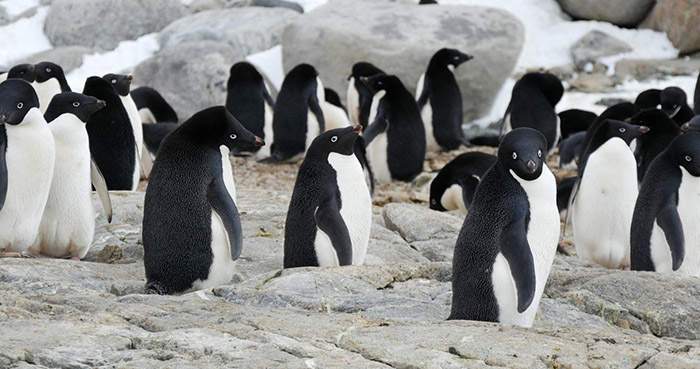
"They steal rocks from each other. As soon as one of them turns around, they'll reach over and steal a rock from the other nest," Johnstone said.
The odd, larger Emperor penguin occasionally makes an unexpected visit to the station surrounds, expeditioners rushing out to catch a peek at the rare visitor once word spreads. Much larger than the Adelies on Shirley Island, the Emperors with their bold and beautiful yellow necks are a treat to see. The Adelies are a common visitor though, making the long uphill trek from Shirley Island to the station limits -- even waddling through Casey Station itself.
But the flightless birds, zooming around on their bellies and squawking over engagement rocks, are far from the only life out here. Above the frozen continent, not much survives. Penguins and seals are adapted to endure the cold, but there are no trees, no grass, no shrubs, no plants, no flowers -- just the odd bit of stringy dark moss clinging to rock. "I miss trees. I miss green things," Lauren Murphy, a Bureau of Meteorology forecaster, said.
But below the sea ice, under the frozen cap of ocean water, it's a vividly different story. "Under the sea ice you've got a really stable environment. It's always the same temperature, even though it's a really harsh temperature of minus 1.85C all year, but it doesn't vary much so they only have to adapt to one temperature," the marine biologist said.'
"There's very little current under here, because for 10 months of the year, there's a covering of sea ice. They don't have to deal with big tidal currents or waves or storms or wind action, or temperature changes. The conditions are relatively stable through the year."
The word 'frozen' is often used to denote something which has stopped; static, not moving. It is synonymous with lifelessness, death, a barren wasteland. Antarctica is a frozen continent, but it is by no means dead. It grows and shrinks like a living organism. With the yearly melt and refreeze, as the continent effectively doubles in size during the winter as sea water becomes ice, it is arguably the most alive continent on Earth. The life that exists down here -- human, animal and plant alike -- is some of the hardiest, most resilient on the planet. It's an entire continent devoted to peace and science, to work for the betterment of the entire planet.
It's alive with purpose.
"Try some of my home-made kombucha and sourdough bread" is not a phrase you'd expected to hear in Antarctica.
We're in an industrial-size kitchen, watching as a chef rolls dough for sweet pastries. There are loaves of bread sitting hot and freshly baked, slabs of pork belly being prepared for dinner, and a cup of the fermented dark tea in my hand. We're not in Fitzroy or Newtown, St Kilda or Newtown; we're inside Casey Station. Out the window, large icebergs dot the bay, looming and menacing all the way to the horizon. Inside, the chef coils the dough into Danishes. Herbs and spices fill the air. The empty kitchen and mess hall will soon be filled with workers for the morning smoko break.
It's all a far cry from Douglas Mawson and his team, who mapped Antarctica on a diet of tea, cocoa and a somewhat unappetising stew of crushed dry biscuits, with a concoction of dried beef and fat known as pemmican, while living in basic tents.
"It's actually a pretty soft life on the station really," Dr Nick Gales, the head of the Australian Antarctic Division, said. "You have an extraordinarily talented chef cooking every meal for you. There's an enormous resource of films, music and books, and outside you have this wonderland of places to explore and experience. I don't think people get bored."
Casey Station is essentially a small town of about 100 people in the summer months. There's a well-equipped doctor's studio, movie theatre, library, two gyms, even a bar complete with pool table and dart board. Casey consists of a few large buildings and storage sheds, but much of the vital infrastructure is in the main building -- "the big Red Shed". It's literally a big red shed, a two-storey building looking like a barn from the outside but more like an old-school ski lodge or university dormitory on the inside.
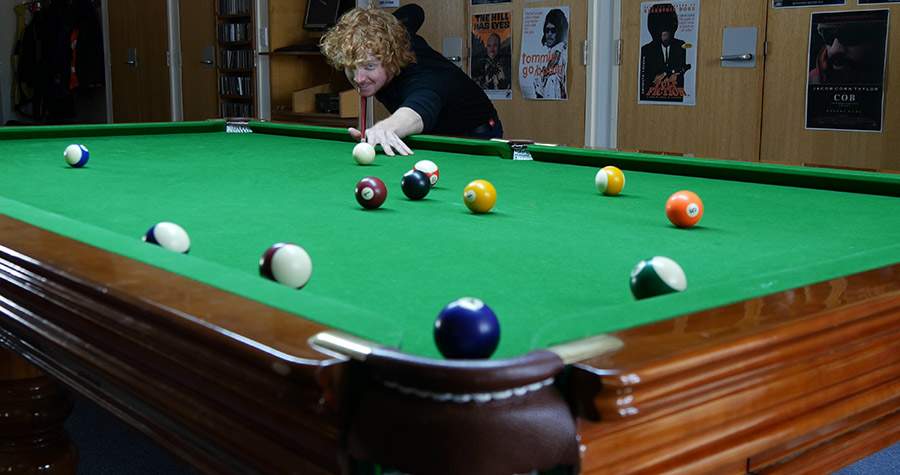
Each expeditioner has their own room with a bed, desk, drawers, phone and storage space. There are shared bathrooms exactly like any bathroom on the mainland – flushing toilets, hot showers, taps with running water. There's got a ping-pong and air hockey table, an arcade game machine with Space Invaders, a PlayStation, an entertainment room stocked with movies and TV shows…
"You've got pretty much everything here that you have at home, there's not too much you go without, but the only thing you go without is the fact you're not at home," station leader Paul Ross said.
It's November, when it would be coming into summer back at home. But even in this winter wonderland there are little tastes of Australia all over -- John Farnham blasting from the work sheds, Tex Perkins blaring in the kitchen, Vegemite in trays on the kitchen tables, the Aussie flag waving out front of the station and in patch form on almost every jacket, and replays of the footy grand finals showing in the Odeon movie theatre.
Then there's the most important room in the place. The kitchen.
"One of the best things about being here… everyone loves the chefs," Andrew Donald said. The chef stands tall and square, with a shaved head and a goatee trimmed thin. He would fit in easily as a gangster in a mob movie. But he's warm and kind and funny, generous with his time and eager to please -- all good traits for a chef responsible for feeding 100 cold, hungry people.
Turbulent changes to your natural routine -- sleeping when the sun is high in the sky, waking up in what seems the dead of night -- are among the many quirks of the Antarctic experience.
There is no money down at Casey Station, the 100-strong Australian research facility on the Bailey Peninsula. There's also no traffic. No children, no roads, nor the need for such mundane activities as shopping or cooking or lawn mowing or paying the rent.
There is no live TV or radio, no nightclubs, no need to commute to work or buy a train ticket or line up at the post office. Add in the isolation, being thousands of miles from home with only a phone and a limited internet connection, and living in dormitory-style close quarters with 100 other people... it's a lot to get used to.
"You quickly realise it's not the environment or the weather that is the hardship. The hard bit is living with each other for such a long time, and your mental stability. That's the actual test," communications officer Stuart Shaw said.
Antarctic expeditioners are evaluated on many matrices before being accepted for the program. The tests include a thorough medical check, skills and competency assessments and a psychological evaluation. Australian Antarctic Division director, Dr Nick Gales, said they look for not only strong and skilled people, but also mental toughness.
"We attempt as much as we can to get an idea of their psychological health and whether they are resilient people, people who can live well within a small community," he told The Huffington Post Australia. "The psychological health and wellbeing of the teams is so important to us, because without that, we don't get our work done effectively."
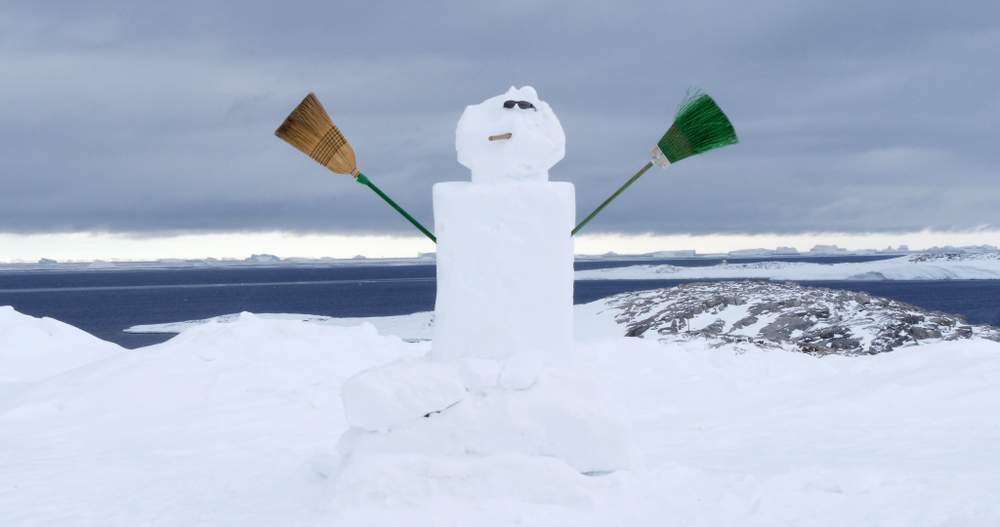
Life on station is now "pretty soft" compared to even the recent past, Gales said. While adventurers like Mawson and Scott camped in flimsy tents, Casey Station is remarkably well-resourced and comfortable. Inside the well-insulated walls of the station, there's not much to betray the fact they're 4000 kilometres south of Perth on a frozen continent of ice. But they still miss the comforts of home, the everyday trappings of normal life.
"There's no prescription for it. Everyone deals with it in their own way," station leader Paul Ross said. "It takes people different lengths of time. We have some people who only want to do the summers, shorter times, but we also have people who want to do the full 12 months. That has to be assessed on the individual. It is not for everyone."
Many though, far from having to adjust to being far from home, actually cherish the isolation. Several expeditioners tell us they savour the quiet, the escape from the daily bustle of traffic and cars and crowds. A young man from Wilkins airbase, an eight-person outpost several hours from the main facility, met us one night when at Casey on a supply run. Over a course of spaghetti carbonara and garlic bread, he says he's up "for a night in the big smoke".
"But I don't like it up here (Casey Station) that much," he said. "Too many people. I'm not much of a people person."
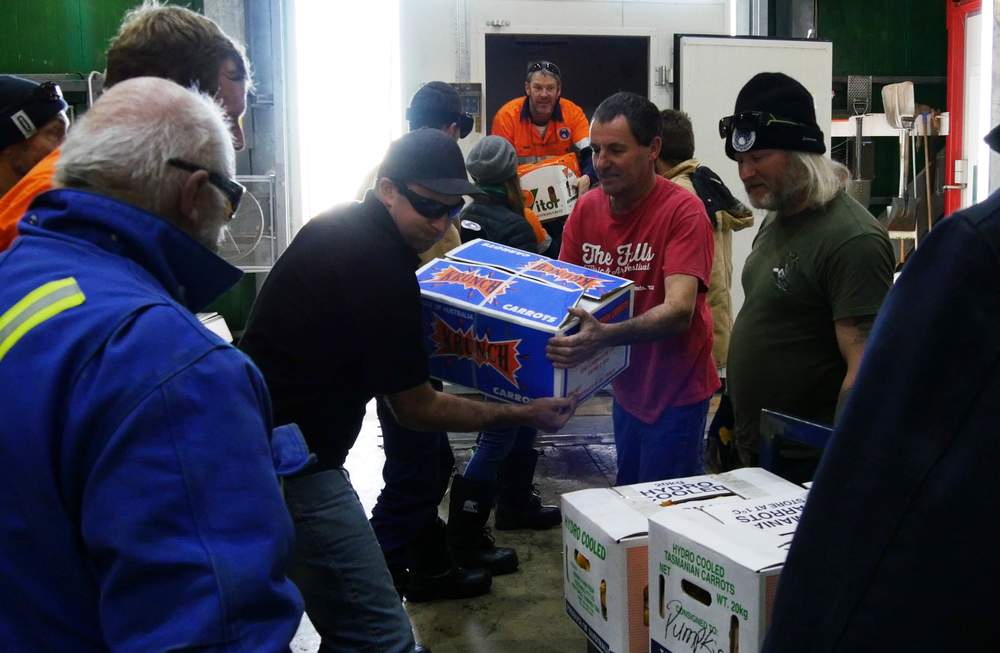
The AAD offers debrief programs with expeditioners before returning home. The community noticeboard inside the station offers information about adjusting to life back at home -- for one, the everyday noises of normal life like cars, birds and wind rustling through trees are absent here, and can take some time to get used to again -- and workers are encouraged to speak up and seek help if they're struggling.
"Being down here, you don't realise what you miss. Green stuff. Grass and trees and that," Lauren Murphy, a weather forecaster, said. There isn't much vegetation here, besides the occasional hardy clump of moss clinging to a rock.
Geotechnical engineer Dr Rebecca McWatters is a Canadian living on the Australian station. She said the little titbits of home, the sounds and smells and sights and experiences, are quickly forgotten but just as quickly called to mind.
"There's not a lot of contrast. It's a land of blue and whites. Occasionally you see a few other colours, red and green, and you'll think 'oh yeah I haven't seen that for a while'. It really brings your senses down, to a point you can really concentrate," she said.
"You get used to not smelling a lot here besides penguin colonies. When you return home, you start to smell vegetation again so your first few days back in the real world, you're trying to hold onto those senses."
Readapting to 'regular life' bears some some unique, and sometimes funny, results.
"We were at the airport waiting to go home, about 10 of us who had done a year and a half down at Davis. A fly landed on someone's leg, we hadn't seen a fly for a year and a half, and we all started chasing it around the airport," Shaw laughed.
"Little things like feeling grass, getting a cold for the first time again, that's quite harsh. It takes a little while to adjust, but you get used to it quickly."
Psychological issues are a concern, but also mundane logistics like sleeping arrangements and adjusting to living in what is essentially a giant sharehouse play their part.
"I was warned before I came here, someone said it was like school camp but with alcohol," Murphy said.
"When I saw my room, it's about 2.5 metres by 2.5 metres. I thought ‘crap, how am I going to survive in here for four months?' but now I love it. I hung up my photos, hung up some fairy lights, got some essential oils. It's like my little sanctuary."
Shaw said living in such close quarters had its challenges.
"It can be quite interesting. You get to know each other very, very well, probably better than some family for that time," he said. "You make some good friends, some not so good friends, let's be honest about it. But you all cope with each other, you have no choice. You have to put up with each other."
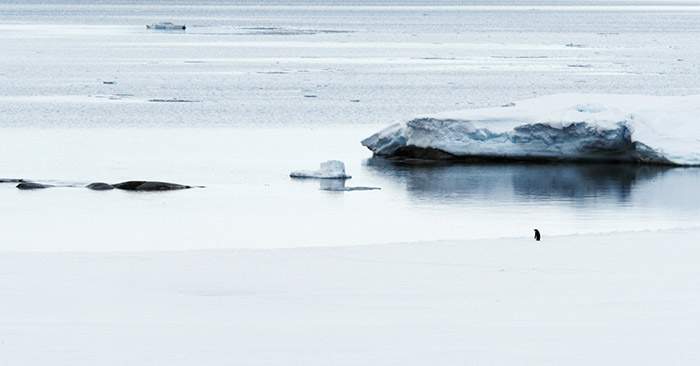
Because for all the isolation, the distance from home, missing simple pleasures like going to the pub or the movies or simply walking on grass, people love being here.
It's a unique experience, only available to a privileged few each year, to spend time in the most pristine and untouched areas on the planet. They are adventurers, supporting Australia's missions and science in Antarctica, and they band together around this common purpose. They support each other and build a community, a new extended family far from home.
"People hear about the penguins and the ice but the most important part for an expeditioner is the community," McWatters said.
"You never come back the same."

